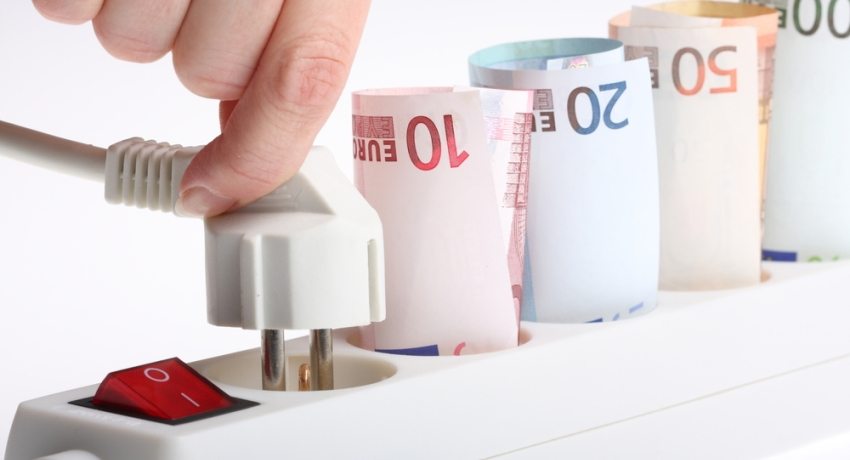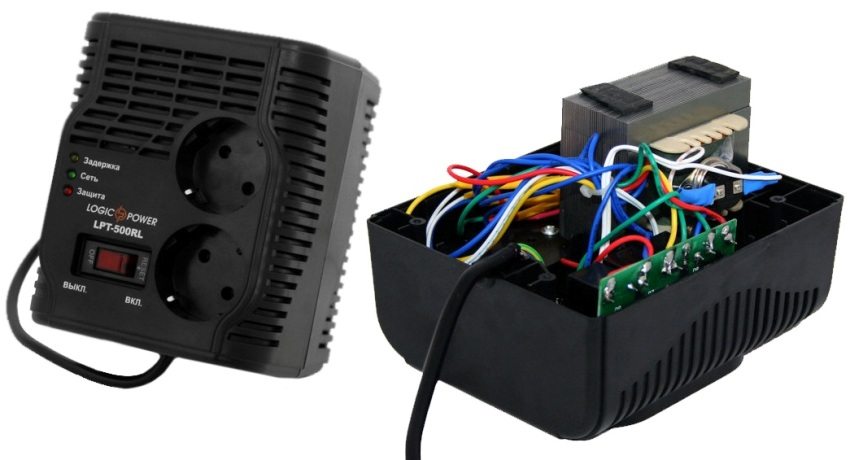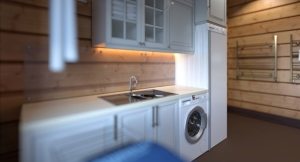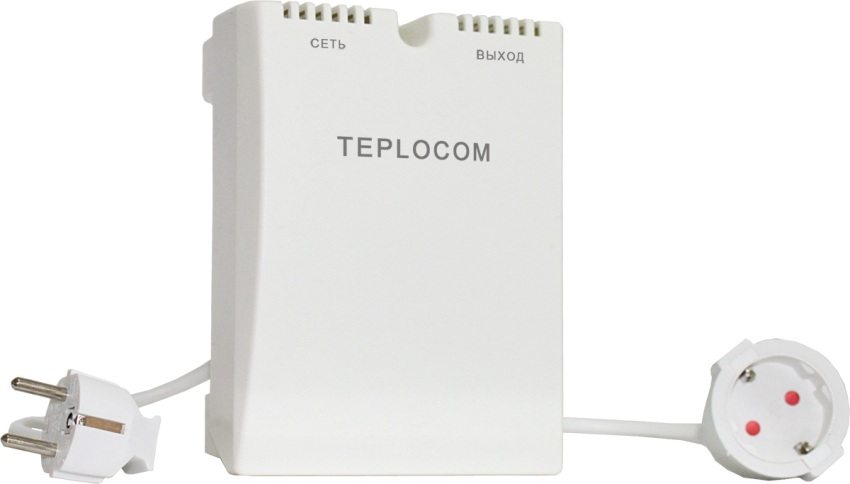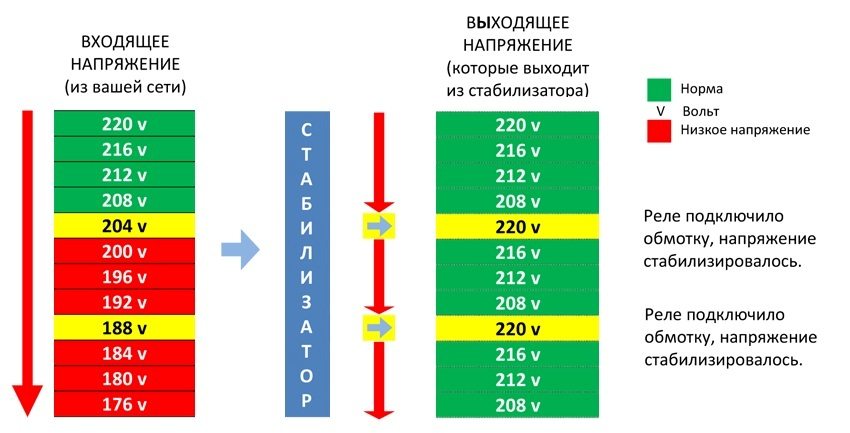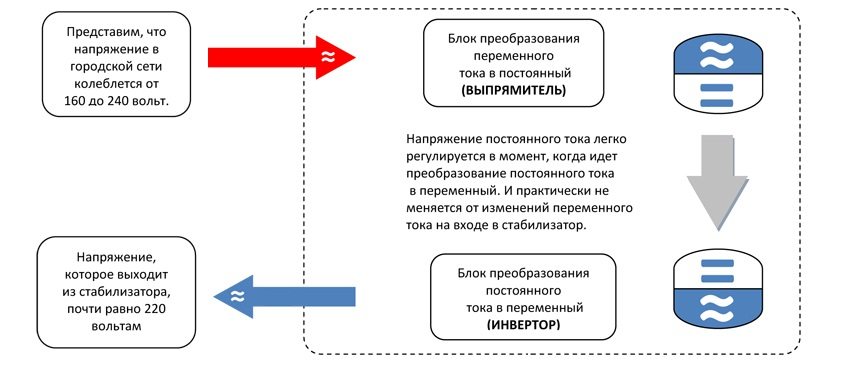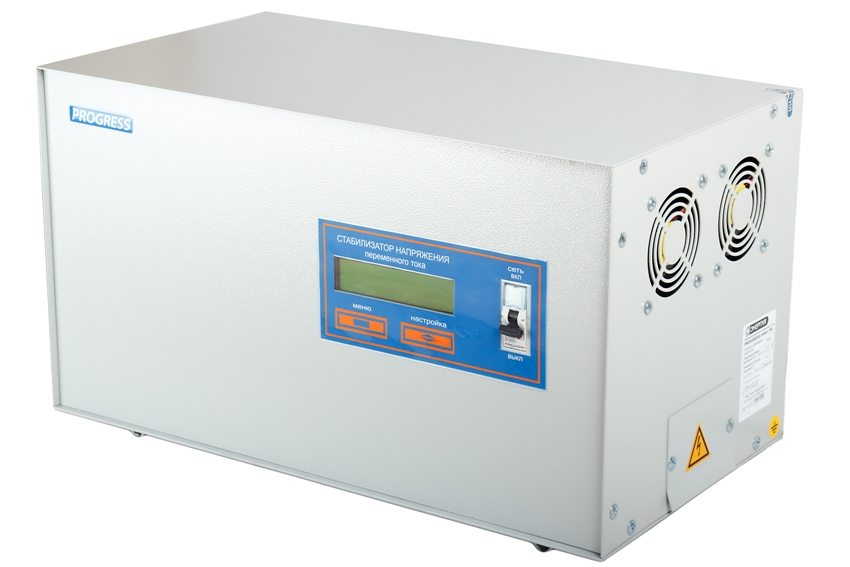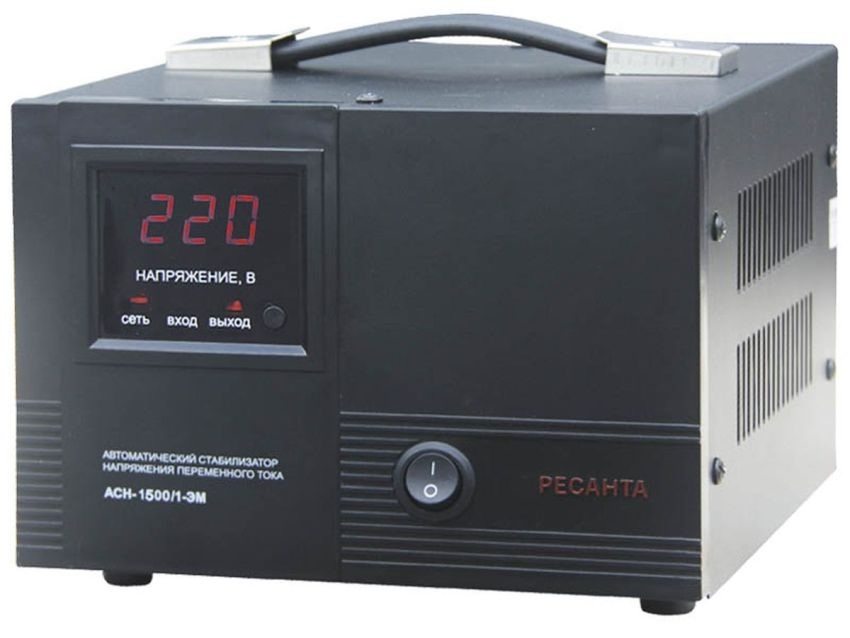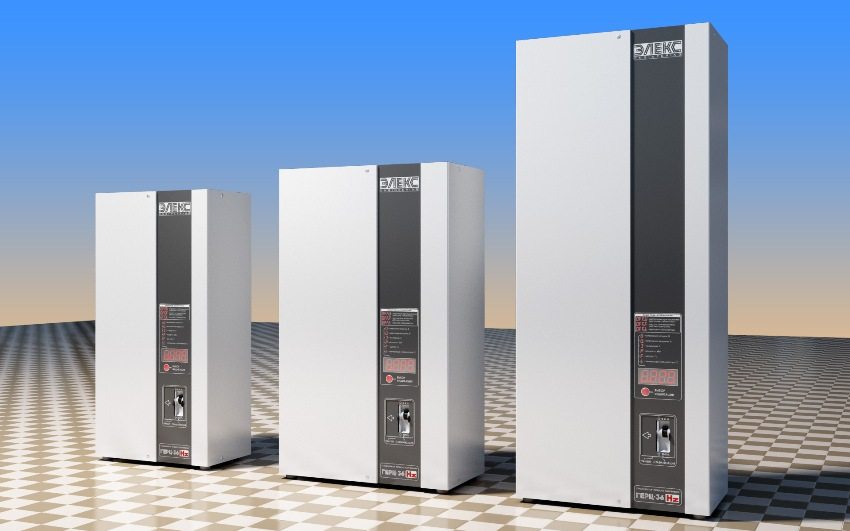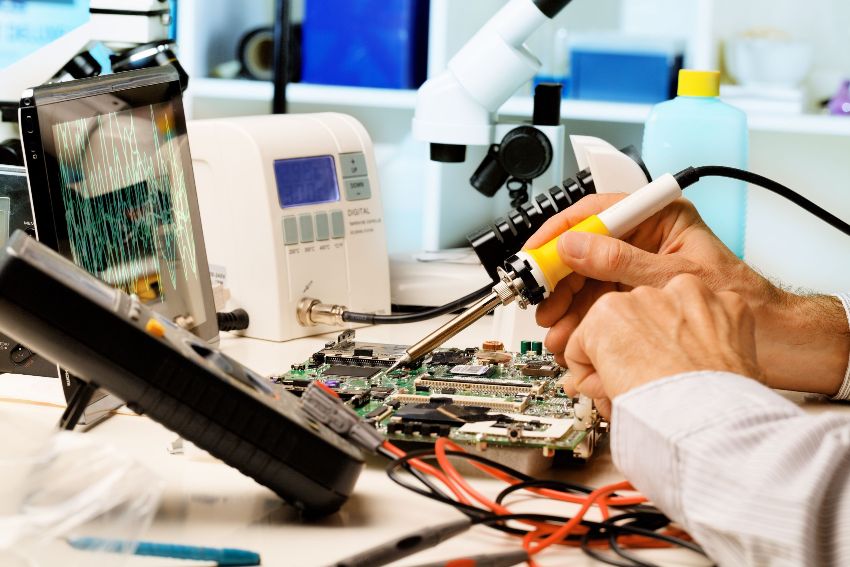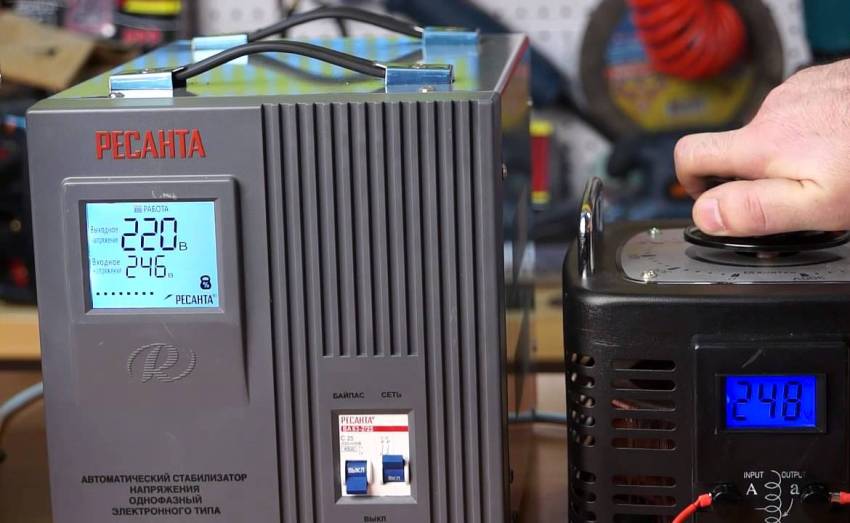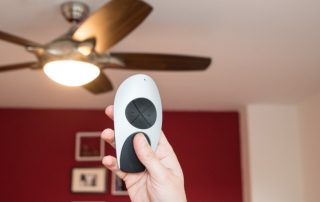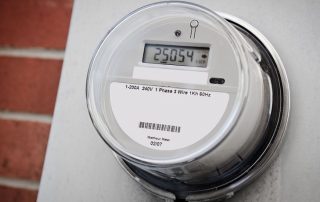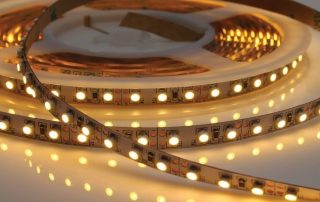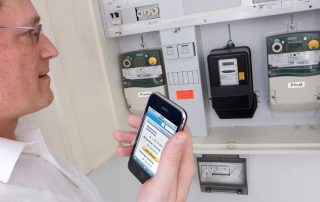Given the quality of the supplied voltage in the network, many are thinking about purchasing a suitable device for protecting electrical equipment. You can correctly calculate the power, choose one or another characteristic of the device, learn about the methods of installing rectifiers and the terms of their operation by studying the opinions of consumers and the recommendations of professionals. To help you, the article "Voltage stabilizers for home: reviews. Which is the best converter to choose. "
Content [Hide]
Voltage stabilizers for home: reviews. Which is the best device to choose for the protection of electrical engineering
Voltage stabilizers are devices that automatically regulate the voltage supplied to the network within the permissible value for the trouble-free operation of electrical engineering. They can be used both for individual equipment (local), and used to protect the entire network as a whole (stationary).
How to choose voltage stabilizers for a private house
Choosing a stabilizer for your home begins with determining the type of power supply. In most cases, this is a single-phase power supply, when a cable with three or less wires is connected to the house. With this type of power supply, single-phase voltage stabilizers are used for the home. If the cable contains four cores - three-phase power supply, designed for the operation of electrical equipment at a voltage of 380V. In this case, three-phase voltage stabilizers are used for the home.
It is known from the reviews that in the case of a three-phase power supply, if the operation of three-phase consumers is not expected, three single-phase rectifiers can be installed, and they can be selected with different powers and characteristics, which will also affect the total cost of the devices. So, for a separate low-power equipment, a local rectifier of insignificant power is selected, the cost of which is much lower than more powerful analogs. In addition, a phase that is rarely used can be left unprotected altogether. It is also possible to apply a more accurate leveler in one phase, and a less accurate leveler in the other, and therefore a lower price.
Related article:
|
Determining the required power for the equalizer, you can go in two ways. In the first case, you should be guided by the circuit breaker. If the machine limits the power supply to 25A, then the required power of the stabilizer is determined as the product of 25A x 220V = 5.5 kW. By adding a power reserve, we get the required power of the stabilizer of 6 kW.
By studying the opinion of users, you can find out what to reduce the power of the rectifier, and hence the cost of purchasing it, possibly by summing the power of all equipment. Taking into account that all equipment will not turn on at the same time, you can opt for a less powerful device.
Another important indicator is the input voltage range.
Useful advice! The operating range of the input voltage is the range of the device at which the rectifier not only operates, but also provides the stated stabilization accuracy.
From customer reviews:
“Some incompetent salespeople confuse the operating range with the limiting range at which the stabilizer will simply operate without providing the stated stabilization accuracy. Don't fall for such tricks. "
Igor Khomchuk, Krasnoyarsk
Influence of stabilizer alignment accuracy on various electrical engineering
When opting for the alignment accuracy, you should know that this characteristic shows how high-quality the output voltage will be. Resant's electromechanical stabilizers received good reviews, giving an output voltage accuracy of +/- 2%. This indicator makes it possible to use these stabilizers for high-precision equipment and equipment with electric motors.
The control accuracy of the stabilizer below 220V ± 3% when the voltage drops affects lighting lamps and halogen lamps. The change in the lighting level becomes noticeable to the eye when switching rectifier stages. When choosing a stabilizer, this factor should be taken into account.
For modern household equipment, it is necessary to select models with a stabilization accuracy of 220V ± 7%.
The presence in the house of audio equipment, hi-fi devices, expensive TV models, gas heating boilers with electronic control provides for the presence of a stabilizer with high maintaining the accuracy of the output voltage - 220V ± 1%.
The main criteria for choosing a voltage stabilizer for a private house
When deciding which voltage stabilizer is best for a home, you should consider the main criteria:
- protective factors - for rectifiers, an important condition is the presence of protective functions that protect the device from short circuit, overheating and overloads, which affect the correct operation and durability of the device;
- input voltage regulation - it is worth choosing stabilizers with a regulation range of 210-230V. This model will allow you to connect equipment designed for Western standards to the existing network without deteriorating the technical condition of the latter, as well as extend the life of incandescent lamps at a voltage of 210V;
- automatic rectifier activation - such a device is capable, after shutdown (if the voltage goes beyond the operating range), after a selected period, reapply the load automatically (if the voltage returns to normal). This will allow you not to turn on the device manually;
- power compliance at any input voltage - such a device is able to maintain the declared output power when the input voltage drops.
Useful advice! When purchasing a stabilizer, you should take into account that the rated power of the device will be much lower if the input voltage is below 220V. Large voltage fluctuations can reduce the power of the device in half.
By visiting thematic forums, you can find out from the reviews which voltage stabilizer is better for the home.
Here is some of them:
“If the voltage in the network is up to 150V, it is better to purchase an electromechanical stabilizer Resanat ASN-15000/1-EM. This device, even at 140V input, provides 180V output. Works flawlessly without breakage. And my sister's ASN-10000/1-Ts, electronic, does not even pull the pump for water supply. "
Ilya Samoilov, Saratov
“I bought Resantu ASN-20000/1-EM three years ago, worked for several months and stopped equalizing the voltage. I took it to the service center, the brushes were replaced under warranty. After repair it works efficiently. "
Sergey Ushakov, Saint Petersburg
“I have installed a single-phase energy stabilizer Voltron RSN-3000, a device of compact dimensions, it is mounted on the wall and does not take up much space. Everything suits me. "
Grigory Vyatkin, Minsk
Which voltage stabilizers are better: an overview of some models
When choosing a rectifier, you should pay attention to the device's ability to carry loads. For example, if a powerful 10kW device was purchased, and the voltage in the network dropped to 160V, then the rectifier failed. This means that the stabilizer had a low load tolerance and at 160V had a power of 5 kW, instead of the declared 10 kW. Therefore, it is important what load the stabilizer can withstand when the voltage in the network changes.
Useful advice! For normal operation of the rectifier, you should give preference to models with a high load capacity or purchase a model that is twice the power of the planned calculated one.
The ability of rectifiers to withstand overload for some time is called overload capacity. This criterion shows the correctness and quality of assembly of the device. Low-quality models of converters do not hold overload.
Reviews indicate that ORTEA devices, Italian voltage stabilizers for the home, the price of which is very high, have high-quality assembly, high overload resistance, normalization accuracy of ± 0.5, protective functions and electronic regulation.
Rectifiers Shtil, Leader are noted among domestic manufacturers. Reliable instruments, however, the stabilization accuracy of these models is ± 5.
Resanta company produces high-quality high-tech devices, oriented to the requirements of international standards. They are distinguished by high accuracy of output voltage, excellent ability to withstand overloads, silent operation and affordable price.
Reviews of Chinese manufacturers leave much to be desired. Such devices are usually of poor quality, sometimes they do not have a voltage normalization function at all, are short-lived and, accordingly, have a low cost.
Features of connecting household voltage stabilizers for home
When connecting a rectifier in your home, follow these guidelines:
- if the equalizer is installed to protect the entire house, it is worth leaving a branch for electrical appliances that cannot be connected through the stabilizer;
- the rectifier must have protection in the form of an automatic device or a bypass bridge (bypass);
- the device is connected only to an electric generator;
- install the stabilizer in a heated room, if possible.
DIY Resant voltage stabilizer repair
Some users on the forums share information that in the event of a device breakdown, it is possible to repair the household voltage stabilizer on their own.
The current in domestic power grids changes with a high frequency, accordingly, the servo drive also often rotates, which can damage the device's motor. Excessive friction and heat build-up on brushes will wear out and clog the wires.
If the engine burned out in the device, then you can go in two ways. In the first case, purchase and install a new engine.
In the second case, it is possible to try to restore the engine with your own hands. First of all, it is necessary to disconnect the motor from the general circuit and connect it to a fairly powerful power source. If a current with a voltage of 5V and a current strength from 100 mA to 150 mA is applied to the outputs of the stabilizer, then all dust particles that stop the work will burn out.
After that, a voltage stabilizer is connected according to a simple scheme. After such a repair, the engine resumes functioning.
From the reviews it can be seen that many users purchase 10 kW home voltage stabilizers from Resanta. In this regard, the manufacturer offers a 10 kW voltage stabilizer microcircuit for consideration in the event of a possible failure of this type of rectifier. Diagrams of the general structure of such rectifiers are similar, with the exception of some elements for devices with different powers.
For the correct selection of a household stabilizer, use the recommendations of professionals and manufacturers, as well as consumer feedback on the compliance of the rectifier functions with the declared characteristics.
